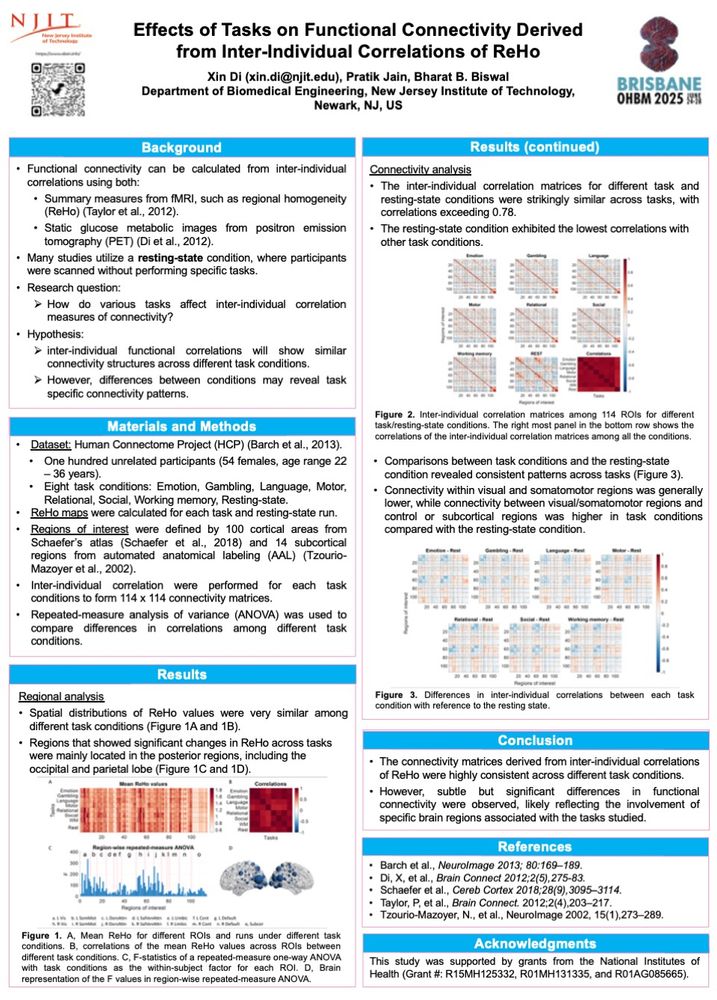Xin Di
@dixin.info
Researcher exploring brain connectivity. Specializes in fMRI and PET imaging techniques. Visit my personal webpage: https://www.dixin.info/.
Glad to share our new study on how the timing of video features shapes BOLD responses! 🎬🧠
We also show that continuous features can be used to estimate hemodynamic response functions across brain regions. #fMRI #Neuroimaging #neuroskyence
We also show that continuous features can be used to estimate hemodynamic response functions across brain regions. #fMRI #Neuroimaging #neuroskyence
Timing Is Everything: Temporal Dynamics of BOLD Responses to Naturalistic Features in Movie Watching https://www.biorxiv.org/content/10.1101/2025.11.07.687226v1
November 10, 2025 at 6:20 PM
Glad to share our new study on how the timing of video features shapes BOLD responses! 🎬🧠
We also show that continuous features can be used to estimate hemodynamic response functions across brain regions. #fMRI #Neuroimaging #neuroskyence
We also show that continuous features can be used to estimate hemodynamic response functions across brain regions. #fMRI #Neuroimaging #neuroskyence
Join us tomorrow.
🧠 The Dark Side of Hyperconnectivity: A Metabolic Prelude to Neurodegeneration in Alzheimer’s Disease
Join us for #MCOS with Dr. Silvia Paola Caminiti (Univ. of Pavia)
📅 Oct 17, 2025 | 🕒 15:00 CEST / 09:00 EDT
🔗 Register: njit-edu.zoom.us/meeting/regi...
Join us for #MCOS with Dr. Silvia Paola Caminiti (Univ. of Pavia)
📅 Oct 17, 2025 | 🕒 15:00 CEST / 09:00 EDT
🔗 Register: njit-edu.zoom.us/meeting/regi...

October 16, 2025 at 7:06 PM
Join us tomorrow.
🧠 The Dark Side of Hyperconnectivity: A Metabolic Prelude to Neurodegeneration in Alzheimer’s Disease
Join us for #MCOS with Dr. Silvia Paola Caminiti (Univ. of Pavia)
📅 Oct 17, 2025 | 🕒 15:00 CEST / 09:00 EDT
🔗 Register: njit-edu.zoom.us/meeting/regi...
Join us for #MCOS with Dr. Silvia Paola Caminiti (Univ. of Pavia)
📅 Oct 17, 2025 | 🕒 15:00 CEST / 09:00 EDT
🔗 Register: njit-edu.zoom.us/meeting/regi...

October 10, 2025 at 2:19 PM
🧠 The Dark Side of Hyperconnectivity: A Metabolic Prelude to Neurodegeneration in Alzheimer’s Disease
Join us for #MCOS with Dr. Silvia Paola Caminiti (Univ. of Pavia)
📅 Oct 17, 2025 | 🕒 15:00 CEST / 09:00 EDT
🔗 Register: njit-edu.zoom.us/meeting/regi...
Join us for #MCOS with Dr. Silvia Paola Caminiti (Univ. of Pavia)
📅 Oct 17, 2025 | 🕒 15:00 CEST / 09:00 EDT
🔗 Register: njit-edu.zoom.us/meeting/regi...
Reposted by Xin Di
Do you review papers? Check out Earl's @earlkmiller.bsky.social recommendations.
The one that i would emphasize the most:
jocnf.pubpub.org/pub/qag76ip8...
The one that i would emphasize the most:
jocnf.pubpub.org/pub/qag76ip8...

October 7, 2025 at 4:33 PM
Do you review papers? Check out Earl's @earlkmiller.bsky.social recommendations.
The one that i would emphasize the most:
jocnf.pubpub.org/pub/qag76ip8...
The one that i would emphasize the most:
jocnf.pubpub.org/pub/qag76ip8...
Reposted by Xin Di
A method for capturing neuronal activity using fMRI excited the neuroimaging field but couldn’t be replicated. Today, the authors of the original paper retracted their work.
By @callimcflurry.bsky.social
#neuroskyence
www.thetransmitter.org/retraction/a...
By @callimcflurry.bsky.social
#neuroskyence
www.thetransmitter.org/retraction/a...

Authors retract Science paper on controversial fMRI method
Several MRI artifacts contribute to the neuronal activity signal picked up by the method, according to a preprint the authors posted this month.
www.thetransmitter.org
September 25, 2025 at 6:10 PM
A method for capturing neuronal activity using fMRI excited the neuroimaging field but couldn’t be replicated. Today, the authors of the original paper retracted their work.
By @callimcflurry.bsky.social
#neuroskyence
www.thetransmitter.org/retraction/a...
By @callimcflurry.bsky.social
#neuroskyence
www.thetransmitter.org/retraction/a...
Reposted by Xin Di
Resting-State fMRI and the Risk of Overinterpretation: Noise, Mechanisms, and a Missing Rosetta Stone https://www.biorxiv.org/content/10.1101/2025.09.16.676611v1
September 19, 2025 at 9:15 PM
Resting-State fMRI and the Risk of Overinterpretation: Noise, Mechanisms, and a Missing Rosetta Stone https://www.biorxiv.org/content/10.1101/2025.09.16.676611v1
Join us tomorrow!
Join us this Friday for Molecular Connectivity Online Series (MCOS). Dr. Jingyuan Chen will talk about "Simultaneous EEG-PET-MRI identifies temporally coupled, spatially structured hemodynamic and metabolic dynamics across wakefulness and NREM sleep." Please register 👇 #molecularconnectivity #mcwg

September 18, 2025 at 5:54 PM
Join us tomorrow!
Join us this Friday for Molecular Connectivity Online Series (MCOS). Dr. Jingyuan Chen will talk about "Simultaneous EEG-PET-MRI identifies temporally coupled, spatially structured hemodynamic and metabolic dynamics across wakefulness and NREM sleep." Please register 👇 #molecularconnectivity #mcwg

September 16, 2025 at 2:49 PM
Join us this Friday for Molecular Connectivity Online Series (MCOS). Dr. Jingyuan Chen will talk about "Simultaneous EEG-PET-MRI identifies temporally coupled, spatially structured hemodynamic and metabolic dynamics across wakefulness and NREM sleep." Please register 👇 #molecularconnectivity #mcwg
AI chatbots are already biasing research — we must establish guidelines for their use now www.nature.com/articles/d41...

AI chatbots are already biasing research — we must establish guidelines for their use now
The academic community has looked at how artificial-intelligence tools help researchers to write papers, but not how they distort the literature scientists choose to cite.
www.nature.com
September 10, 2025 at 6:33 PM
AI chatbots are already biasing research — we must establish guidelines for their use now www.nature.com/articles/d41...
Haven't been able to visit biorxiv website for a while now... Cloudflare not working?

September 9, 2025 at 6:07 PM
Haven't been able to visit biorxiv website for a while now... Cloudflare not working?
Reposted by Xin Di
New paper in Imaging Neuroscience by Pratik Jain, Anil K. Sao, and Bharat Biswal:
Single scan, subject-specific component extraction in dynamic functional connectivity using dictionary learning
doi.org/10.1162/IMAG...
Single scan, subject-specific component extraction in dynamic functional connectivity using dictionary learning
doi.org/10.1162/IMAG...
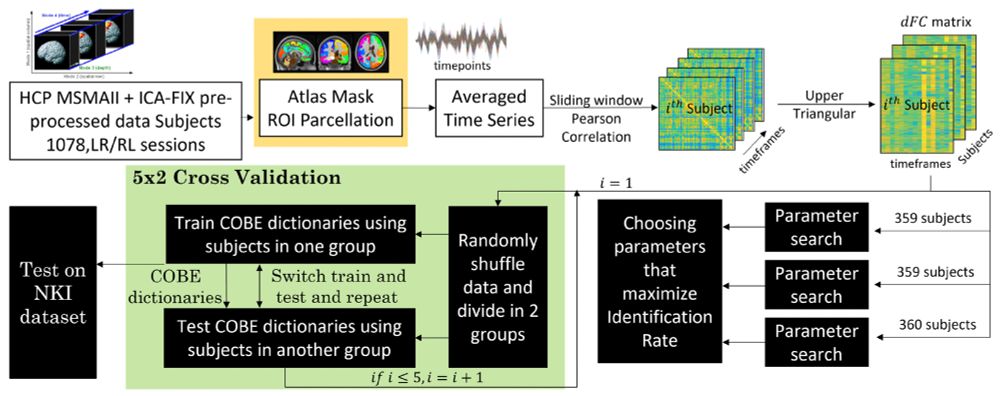
September 3, 2025 at 12:07 PM
New paper in Imaging Neuroscience by Pratik Jain, Anil K. Sao, and Bharat Biswal:
Single scan, subject-specific component extraction in dynamic functional connectivity using dictionary learning
doi.org/10.1162/IMAG...
Single scan, subject-specific component extraction in dynamic functional connectivity using dictionary learning
doi.org/10.1162/IMAG...
Computer crashed on the second day of the semester… great start. How’s your semester going?
September 3, 2025 at 6:33 PM
Computer crashed on the second day of the semester… great start. How’s your semester going?
Apparently some PI sent NIH 40+ grant applications 🤯 so now there’s a cap: max 6 submissions per PI per year. grants.nih.gov/grants/guide...
NOT-OD-25-132: Supporting Fairness and Originality in NIH Research Applications
NIH Funding Opportunities and Notices in the NIH Guide for Grants and Contracts: Supporting Fairness and Originality in NIH Research Applications NOT-OD-25-132. NIH
grants.nih.gov
August 15, 2025 at 3:10 PM
Apparently some PI sent NIH 40+ grant applications 🤯 so now there’s a cap: max 6 submissions per PI per year. grants.nih.gov/grants/guide...
Me: sends group email
My inbox 0.3 seconds later: [Out of Office, Out of Office, Out of Office…] 📬💥
My inbox 0.3 seconds later: [Out of Office, Out of Office, Out of Office…] 📬💥
August 8, 2025 at 6:01 PM
Me: sends group email
My inbox 0.3 seconds later: [Out of Office, Out of Office, Out of Office…] 📬💥
My inbox 0.3 seconds later: [Out of Office, Out of Office, Out of Office…] 📬💥
Interesting fNIRS"NARPS"study. Interesting to see how research experience is correlated to confidence and results agreement.
38 research teams analyzed the same fNIRS data...Really nice visualization of the variety of processing pipelines people use from Meryem Yücel, Rob Luke, et al.:
"fNIRS reproducibility varies with data quality, analysis pipelines, and researcher experience"
www.nature.com/articles/s42...
"fNIRS reproducibility varies with data quality, analysis pipelines, and researcher experience"
www.nature.com/articles/s42...

August 5, 2025 at 8:38 PM
Interesting fNIRS"NARPS"study. Interesting to see how research experience is correlated to confidence and results agreement.
On the analysis of functional PET (fPET)-FDG: baseline mischaracterization can introduce artifactual metabolic (de)activations direct.mit.edu/imag/article...
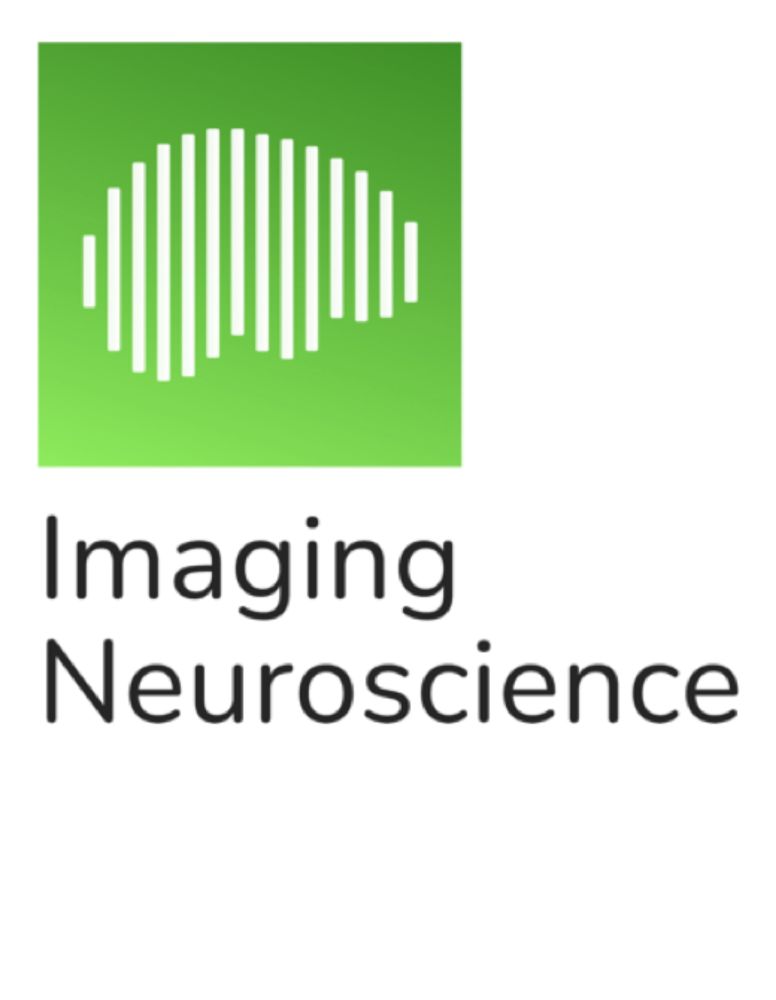
On the analysis of functional PET (fPET)-FDG: baseline mischaracterization can introduce artifactual metabolic (de)activations
Abstract. Functional Positron Emission Tomography (fPET) with (bolus plus) constant infusion of [18F]-fluorodeoxyglucose FDG), known as fPET-FDG, is a recently introduced technique in human neuroimagi...
direct.mit.edu
August 5, 2025 at 1:05 PM
On the analysis of functional PET (fPET)-FDG: baseline mischaracterization can introduce artifactual metabolic (de)activations direct.mit.edu/imag/article...
Attending OHBM 2025? Don’t miss these two symposia—join us today! #ohbm2025 #mcwg #molecularconnectivity
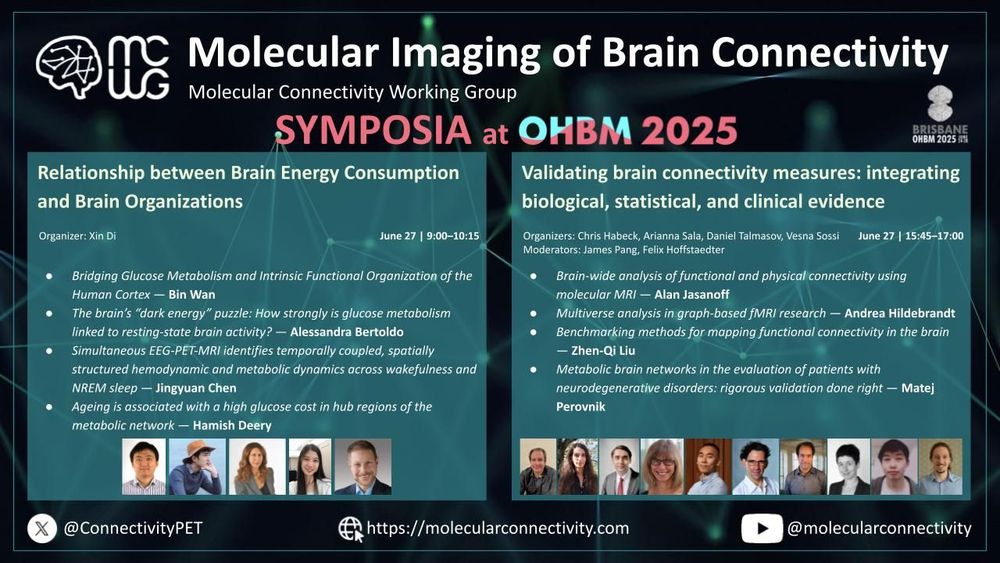
June 26, 2025 at 9:40 PM
Attending OHBM 2025? Don’t miss these two symposia—join us today! #ohbm2025 #mcwg #molecularconnectivity
Interesting paper on #molecularconnectivity using SPECT data
Harikumar et al. examine fMRI-guided SPECT brain networks in schizophrenia patients and healthy controls: doi.org/10.52294/001...
@fmri-today.bsky.social @vcalhoun.bsky.social @ohbmofficial.bsky.social
@fmri-today.bsky.social @vcalhoun.bsky.social @ohbmofficial.bsky.social

June 12, 2025 at 10:50 PM
Interesting paper on #molecularconnectivity using SPECT data
Reposted by Xin Di
New paper in Imaging Neuroscience by Pratik Jain, Bharat Biswal, et al:
WhiFuN: A toolbox to map the white matter functional networks of the human brain
doi.org/10.1162/IMAG...
WhiFuN: A toolbox to map the white matter functional networks of the human brain
doi.org/10.1162/IMAG...
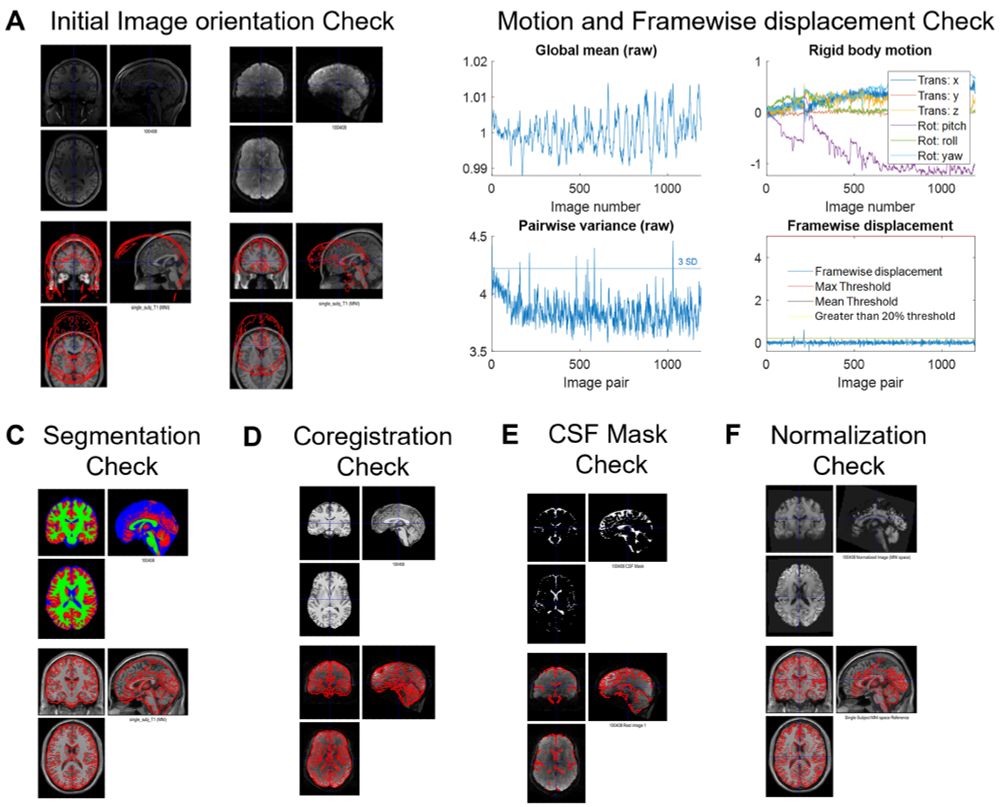
June 8, 2025 at 8:49 AM
New paper in Imaging Neuroscience by Pratik Jain, Bharat Biswal, et al:
WhiFuN: A toolbox to map the white matter functional networks of the human brain
doi.org/10.1162/IMAG...
WhiFuN: A toolbox to map the white matter functional networks of the human brain
doi.org/10.1162/IMAG...
Glucose metabolism in bones also form a network: Innate [18F]Fluorodeoxyglucose PET bone networks of lung cancer patients predict survival
link.springer.com/article/10.1... #molecularconnectivity
link.springer.com/article/10.1... #molecularconnectivity
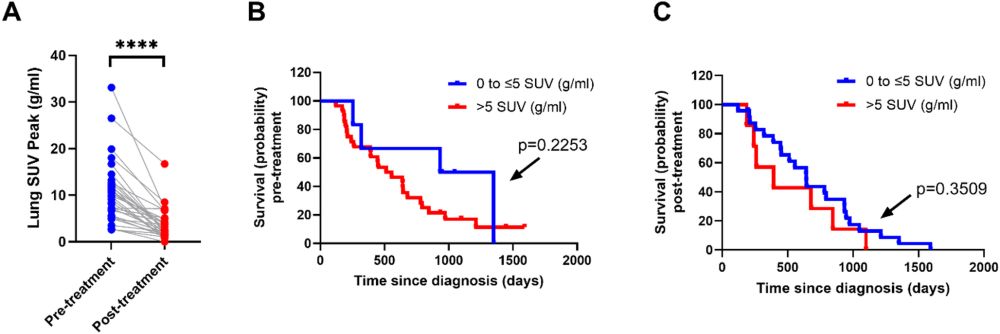
Innate [18F]Fluorodeoxyglucose PET bone networks of lung cancer patients predict survival - European Journal of Nuclear Medicine and Molecular Imaging
Purpose Prognostication of lung cancer patients remains challenging clinically. This study aims to address this problem by investigating the utility of bone glucose metabolism networks as a prognostic...
link.springer.com
June 6, 2025 at 5:26 PM
Glucose metabolism in bones also form a network: Innate [18F]Fluorodeoxyglucose PET bone networks of lung cancer patients predict survival
link.springer.com/article/10.1... #molecularconnectivity
link.springer.com/article/10.1... #molecularconnectivity
For those working with HCP data, how do you account for the acquisition phase as a factor? In our analysis, we found significant differences in ReHo values between the LR and RL phase acquisitions.

June 5, 2025 at 4:10 PM
For those working with HCP data, how do you account for the acquisition phase as a factor? In our analysis, we found significant differences in ReHo values between the LR and RL phase acquisitions.
New paper from collaborators: Glucose metabolism in hyper-connected regions predicts neurodegeneration and speed of conversion in Alzheimer’s disease link.springer.com/article/10.1... #brainconnectivity #molecularconnectivity #MCWG

Glucose metabolism in hyper-connected regions predicts neurodegeneration and speed of conversion in Alzheimer’s disease - European Journal of Nuclear Medicine and Molecular Imaging
Purpose Here, we combined a longitudinal design to assess whole-brain hyper- and hypo-connectivity in the different clinical phases of Alzheimer’s disease (AD) with a multimodal approach to understand...
link.springer.com
June 5, 2025 at 1:23 PM
New paper from collaborators: Glucose metabolism in hyper-connected regions predicts neurodegeneration and speed of conversion in Alzheimer’s disease link.springer.com/article/10.1... #brainconnectivity #molecularconnectivity #MCWG
In case you missed it. Here is the recording of the talk: www.youtube.com/watch?v=rji3...
June 4, 2025 at 3:19 PM
In case you missed it. Here is the recording of the talk: www.youtube.com/watch?v=rji3...
Reposted by Xin Di
When I first started working with resting state fMRI as a postdoc, there was a lot of skepticism about what we could learn from it. 20 years later, it's hard to imagine where the field of neuroscience would be without it. Here's a summary 🧠 www.nature.com/articles/s41...

The history and future of resting-state functional magnetic resonance imaging - Nature
This Review provides an overview of the history of resting-state functional MRI research, which has helped to reveal the spatiotemporal organization of the brain, and discusses how it can contribute f...
www.nature.com
May 28, 2025 at 3:52 PM
When I first started working with resting state fMRI as a postdoc, there was a lot of skepticism about what we could learn from it. 20 years later, it's hard to imagine where the field of neuroscience would be without it. Here's a summary 🧠 www.nature.com/articles/s41...


